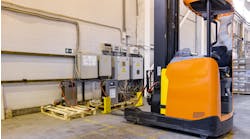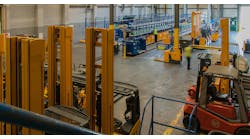I was in Phoenix recently to give conveyor manufacturers a piece of your mind. By “you,” I mean the collective “you” who make up the audience of Material Handling & Logistics. The manufacturers I addressed are members of the Conveyor Equipment Manufacturers Association (CEMA), and they convened for their annual conference to share insights on the state of their industry and markets. As part of that program, MH&L was invited to offer a perspective from the trade press. I figured the best way to do that would be to share with them what some of their customers have told us they want from conveyor OEMs.
These OEMs spend a lot of money on research and product development to come up with unique solutions to common problems. Some of the customers I spoke with in preparing my presentation to CEMA have another word for “unique.” That word is “sticky.” These particular customers feel that some OEMs develop proprietary innovations to make customers stick with them when it’s time for a fix or an upgrade.
Bill Moir, energy program manager for facilities at UPS, wants systems that are easy to maintain and repair. That implies an “off-the-shelf” mindset that he feels some OEMs don’t share.
“They want to combine the motor with controllers, turning what used to be an off-the-shelf motor that I could throw out and put a new one in into something I have to go back to that same vendor for,” he told me. “There seems to be a backlash against that level of commoditization because it makes that product sticky.”
And, OEMs, be careful about selling efficiency if it sacrifices reliability, this customer emphasized.
“There’s now a move away from the traditional three phase motors to using servo motors that 20 years ago were a nightmare with all the electronics you had to put on it,” he continued. “Now we’re getting very high quality frequency drives with vector level type control that can govern a servo motor and all of a sudden my horsepowers are dropping by 20-30 percent. I can move the same amount of volume with less energy, and as long as the reliability is there, we want that. But some OEMs say ‘you’d save money if you didn’t oversize your motors.’ Well, I’m not going to undersize a motor to save efficiency and in the fourth year have it go bad on me come Christmas. The worst thing from our customer’s perspective is if their box doesn’t show up.”
The message the users I interviewed wanted me to convey to the CEMA membership is that OEMs need to understand the customer’s customer’s needs, and that requires a holistic approach to service.
Paul Slack, senior project manager of supply chain analysis and distribution engineering for Amway Corporation, seconded Bill Moir’s call for supply chain empathy.
“Wonderful things are being developed in the industry to automate the various order fulfillment processes,” Slack said. "But even if the conveyor is running wonderfully it has to be integrated with the rest of the system, which also has to be running perfectly or the whole system goes down. That’s why emphasis on the entire system working is critical.”
And that dependability can come down to something as simple as parts availability.
“OEMs have done a great job reducing noise and energy usage of their conveyors but I think we also need to be careful that we don’t make every piece of the conveyor require a lot of spare parts,” he concluded. “The more you can utilize common equipment the easier it is for an operation to keep some critical spares on site and keep the system working from a conveyor perspective.”
These are great takeaways for all OEMs and their dealers, whether they specialize in conveyors, forklifts, palletizers or any material handling solution. And the ideas will continue to flow in the coming months as MHI, the Material Handling and Logistics trade association, hosts a series of forums to further explore the minds of industry thought leaders. This effort, called the “Material Handling & Logistics U.S. Roadmap,” is designed to gather input so manufacturers and service providers can "better help customers increase productivity, reduce costs, create jobs and improve the global competitiveness of the U.S.”
If you’d like to help guide this effort, visit www.MHLroadmap.org or email [email protected].


